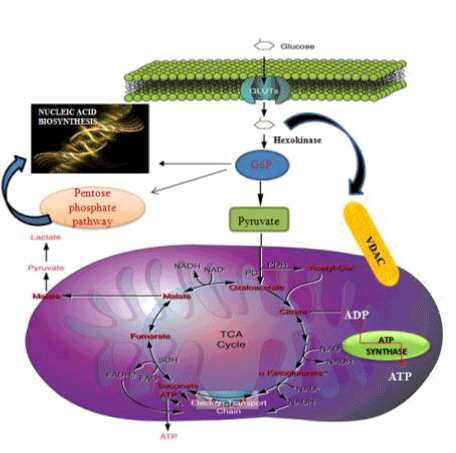
 |
| Figure 1: Role of hexokinase and its major partners. Delivery of glucose to hexokinase (HK) II within a malignant cell and metabolic fates of the glucose-6-phosphate (G-6-P) formed. Glucose brought across the plasma membrane by glucose transporters is rapidly phosphorylated by HK. To maintain the highly glycolytic metabolic flux of such malignant cells, the product G-6-P is rapidly distributed across key metabolic routes. The primary routes are direct entry of the G-6-P into the pentose-phosphate shunt for biosynthesis of nucleic-acid precursors and conversion of the G-6-P via the glycolytic pathway to pyruvate and lactic acid. Here, whereas the lactic acid is transported out to provide an unfavorable environment for surrounding normal cells, some pyruvate is directed to to provide substrates for the tri-carboxylic acid (TCA) cycle. |